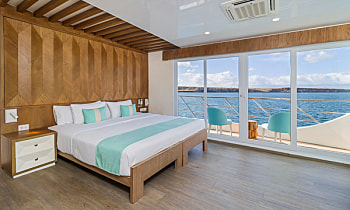Endemic Liveaboard, Galapagos Islands
Luxurious catamaran taking guests of all ages on exciting naturalist cruises in the Galapagos
per person




















































per person
Overview
Endemic is a sleek, attractive liveaboard delivering exclusive naturalist voyages in the Galapagos. Professional designers with shipboard experience contributed to the creation of this vessel, and absolutely nothing was left to chance. As a result, Endemic is not only one of the newest next-generation catamarans in the region, it’s also one of the most luxurious, evolving beyond expectations in a subtle nod to the archipelago’s unique wildlife. Complete with carefully-crafted naturalist itineraries, and convenient facilities for all ages, Endemic helps all guests make the most of their time in the Galapagos.
- Luxurious modern catamaran welcoming guests of all ages
Relax in spacious suites boasting private balconies
Enjoy excursions led by dedicated naturalist guides
Stunning sky deck furnished with a daybed and hot tub
- Number of cabins:8
- Internet:YES
- Nitrox:NO
- Equipment rental:NO
- Group booking discounts
Choose your trip
2025
2026
2027
Cabins

Suite - main deck
Twin or double bed
2 peopleShareable
Suite - upper deck
Twin or double bed
2 peopleShareable
- If you are a solo traveller, we aim to allocate shared cabins on a same-sex basis.
- Non-shareable cabins can not be shared with another single traveler outside your party. A single occupancy surcharge will be applied.



